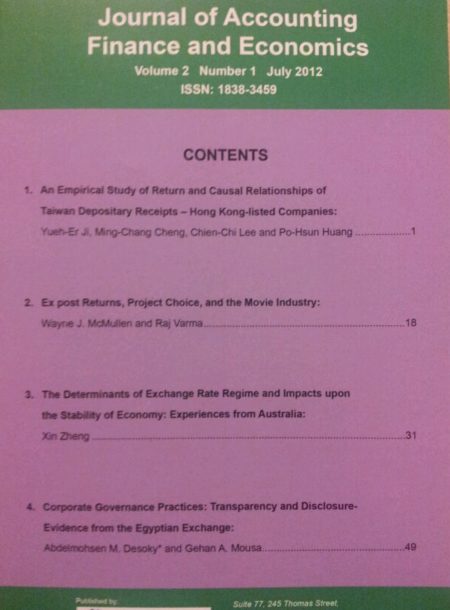Journal of Accounting, Finance and Economics
Vol. 8. No. 1. March 2018 Issue, March 2018, Pages: 109 – 133
Impacts of Corruption on Sustainable Development: A Simultaneous Equations Model Estimation Approach
Muntasir Murshed and Farzana Awlad Mredula
Corruption is perceived to be a major factor hindering sustainable development all around the globe. The aim of this paper is to shed light on the corruption-sustainable development nexus from the perspective of select 47 countries across Asia, Africa and Latin America and the Caribbean (LAC). The paper attempts to estimate the elasticities of socioeconomic and environmental development indicators with regard to corruption and other macroeconomic fundamentals using annual data from 2000 to 2015. In addition, the paper also tests the Environmental Kuznets’s Curve hypothesis in a panel framework and estimates the threshold levels of income at which the environmental degradation takes place with economic growth. Panel unit root and cointegration tests are used while the Three-Stage Least Squares (3SLS) estimation technique is employed to calculate the associated elasticities. Moreover, in order to check the robustness of the relationships, Panel Vector-Error Correction Model (VECM) and Granger causality test are also considered to understand the short run and long-run causal associations between the variables. In light of the estimated results, corruption is found to have a negative relationship with socioeconomic development across the Asian, African and LAC subpanels. In addition, corruption negatively affects environmental development in the context of the Asian and African subpanels while positively affecting in context of the LAC subpanel. Moreover, the findings also suggest that the EKC hypothesis holds true only in the cases of the full panel and the LAC subpanel, with the threshold per capita GDP being around 12,000 US$ and 12,780 US$, respectively. This paper also finds short run bidirectional causality between corruption and socioeconomic development in the context of all the countries cumulatively which did not hold to be true in the long run.

